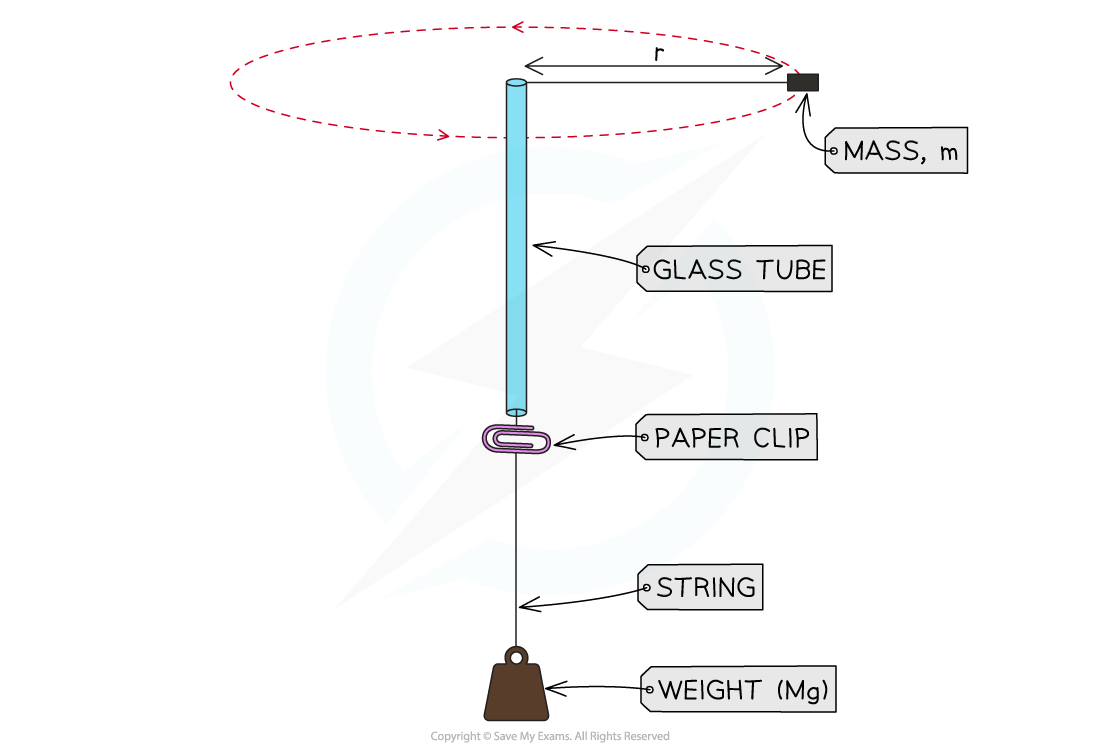Investigating Circular Motion
Equipment & Method
- Circular motion can be investigated using the following setup:
- Tie a bung of mass m, to a piece of string, which sits horizontally
- Thread it though a glass tube and a paper clip, which sits vertically
- At the other end of the string a heavier mass, M is suspended vertically
- This provides the centripetal force, F = Mg when the tension in the string is constant
- The string is spun in a circle:
- The time taken for several rotations is recorded and repeated to remove any random errors
- The masses in the experimental set up are changed before the experiment is repeated again

Explanation
- As the bung is swung in a circle the bigger suspended mass, M will remain stationary
- When the force it provides is equal to the centripetal force, Mg
- This is the centripetal force required to make the bung travel in a circular path
- The weight, and hence the centripetal force, required for different masses, radii and speeds can be investigated
- The forces acting on the bung are:
- The tension in the string
- The weight of the bung downwards
- If the centripetal force required is greater than its weight then the suspended mass moves upwards
- If the centripetal force required is less than its weight then the suspended mass moves downwards
- The paperclip will move accordingly to make this movement clearer
- As the bung moves around the circle, the direction of the tension will change continuously
- The magnitude of the tension will also vary continuously, reaching a maximum value at the bottom and a minimum value at the top
- This is because the direction of the weight of the bung never changes, so the resultant force will vary depending on the position of the bung in the circle
- At the bottom of the circle, the tension must overcome the weight, this can be written as:

- As a result, the acceleration, and hence, the speed of the bung will be slower at the top
- At the top of the circle, the tension and weight act in the same direction, this can be written as:

- As a result, the acceleration, and hence, the speed of the bung will be faster at the bottom

